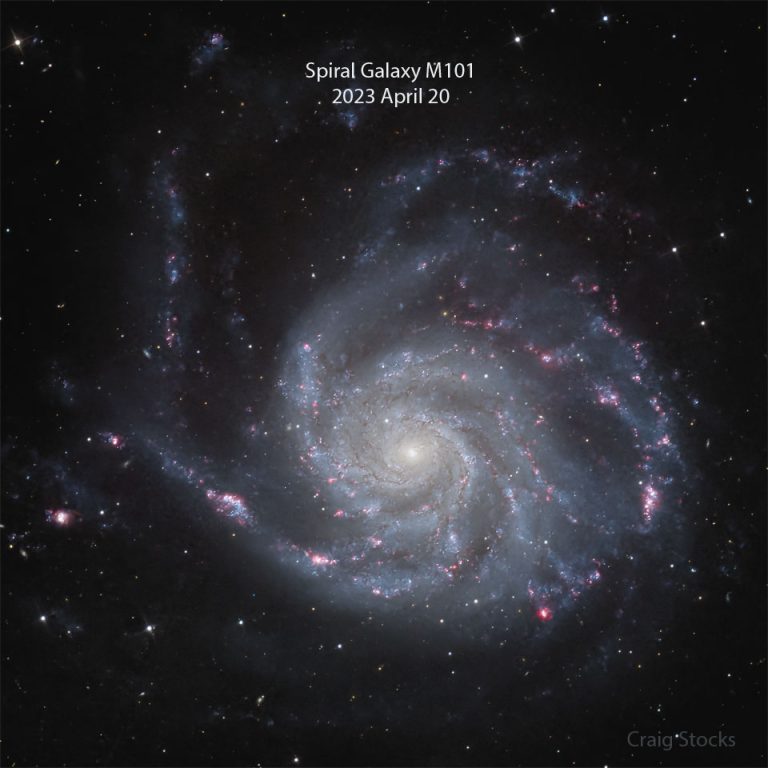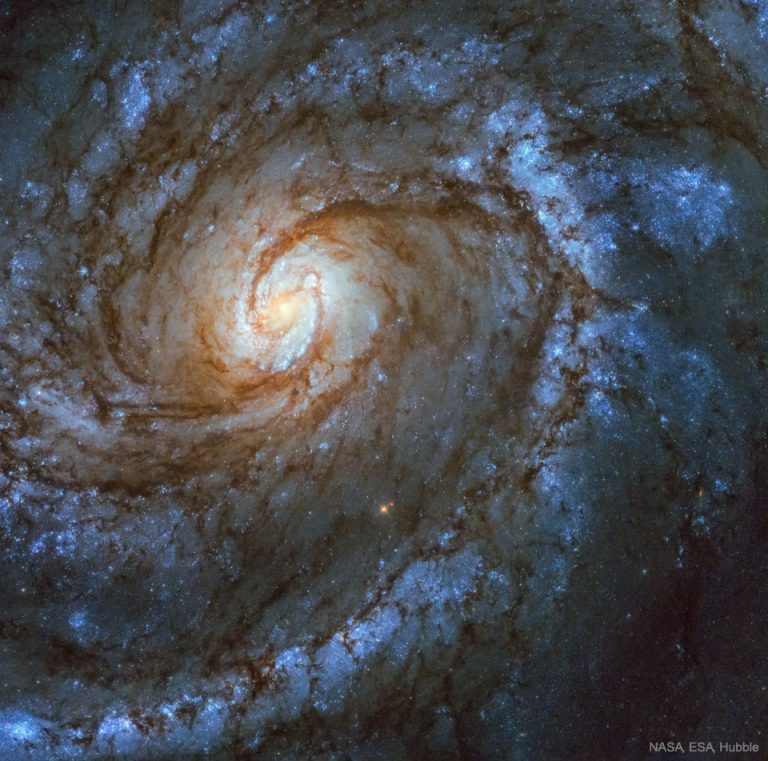M64:黑眼星系特写
2023年7月20日 M64: The Black Eye Galaxy Close Up Image Credit: NASA, ESA, Hubble, HLA; Processing: Jonathan Lodge Explanation: This magnificent spiral galaxy is Messier 64, often called the Black Eye Galaxy or the Sleeping Beauty Galaxy for its dark-lidded appearance in telescopic views. The spiral’s central region, about 7,400 light-years across, is pictured in this reprocessed image from the Hubble Space Telescope. M64 lies some 17 million light-years distant in the otherwise well-groomed northern constellation Coma Berenices. The enormous dust clouds partially obscuring M64’s central region are laced with young, blue star clusters and the reddish glow of hydrogen associated with star forming regions. But imposing clouds of dust are not this galaxy’s only peculiar feature. Observations show that M64 is actually composed of two…










